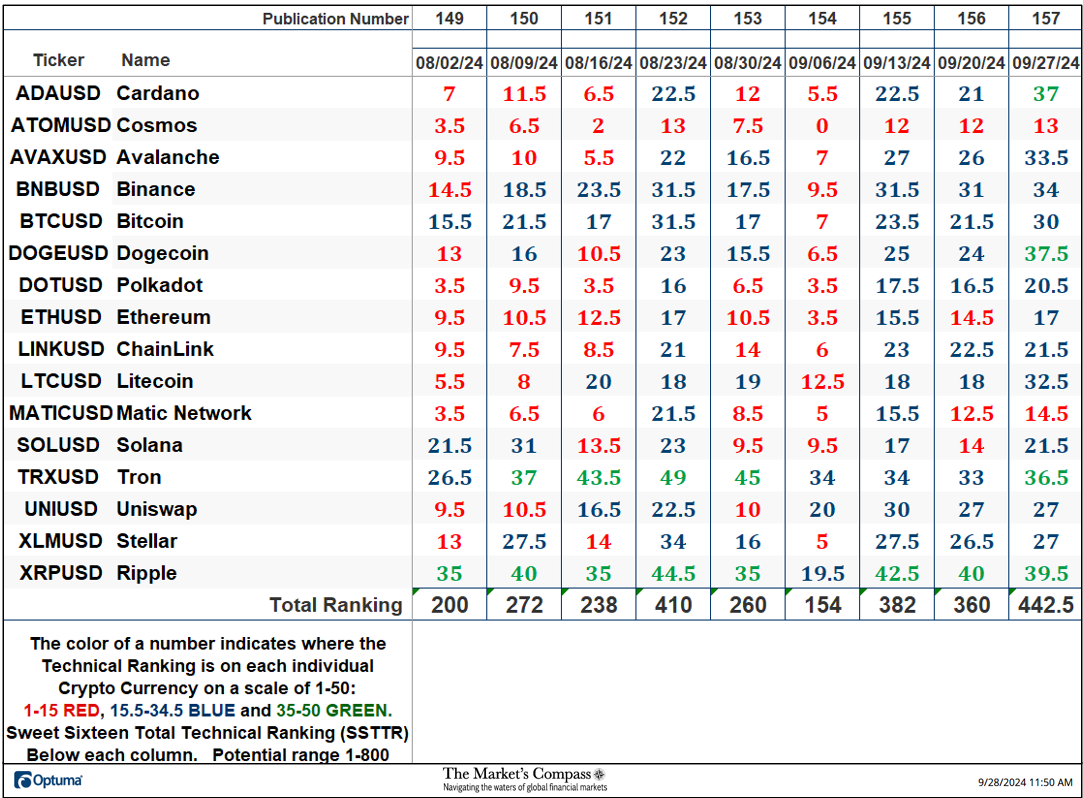Research reveals that older Australians have particular preferences when it comes to housing, where moving becomes less about downsizing and more about finding a home that meets specific needs for this stage of life.
As Australia’s population ages, the housing needs of older Australians are becoming increasingly important.
We are staring down the barrel of a major demographic shift, with 17% of the population in the 65+ age group, according to Australian Bureau of Statistics data. We will see this move to 25% by 2050, with one in four Australians aged 65 and older.
Baby Boomers are delaying moving out of their larger homes, often due to emotional attachments and the perceived lack of appealing alternatives, according to Temple & Webster’s research paper, Finding the Right Fit: The Future of Rightsizing in Australian Housing. This contributes to the nation’s housing supply crisis by reducing the availability of family-sized homes for younger families.
But there are specific reasons why they’re holding out, including stamp duty concerns.
“Stamp duties penalise people for rightsizing and making larger homes available for growing families. They also impose a substantial further burden on first-home buyers trying to save a deposit,” said Paul Ryan, PropTrack senior economist, in PropTrack’s September Housing Affordability Report.
The Rightsizing study drilled down into the other main reasons why older Australians remain in homes that are now too large for their needs. A specific set of requirements emerged from the data, suiting the concept of ‘rightsizing’ as opposed to downsizing.
MORE: Lap of luxury: 10 impressive apartment pools reshaping inner-city living
Rightsizing vs downsizing
The concept of rightsizing is central to understanding the current and future housing needs of Australians, and was a key focus area of the study.
The white paper found one in four Australians plan to move house within the next two years, with 40% of respondents citing “rightsizing” as a key reason for relocating.
According to the research, Australians living in homes with two spare rooms are the most satisfied with their living situation. These households are the least likely to consider moving within the next two years, with 77% of respondents indicating that they consider their current home to be the right size for their needs.
Multi-functional layouts with consideration of bonus rooms is a major factor in the decision to move, with the study finding two spare rooms is the sweet spot for most Australians. Picture: Supplied/The Block
However, the study challenges the traditional belief that more space is automatically better. Instead, it suggests that there is an optimal amount of space that contributes to housing satisfaction.
Households with one or no spare rooms often feel cramped and express a desire for more space, while those with three or more spare rooms tend to feel that their homes are too large, leading to a desire to downsize. It’s about getting the mix just right.
Homes with two spare rooms are found to be the optimum size, balancing the need for additional space with the desire to avoid excess, which can lead to a sense of dissatisfaction.
This places significant focus on the availability of suitable homes for older Australians that are the right size in all aspects for them.
Four specific stage-of-life needs
The study found that practicality of the home, proximity to essential services, accessibility, and the availability of community amenities are four key concerns older Australians seek to have met before feeling confident enough to make a move.
1. Practicality, LUGs and ease of maintenance
Older Australians tend to prioritise practical features in their new homes, such as private garages, ample storage space, and proximity to essential services like hospitals and shopping centres.
The Temple & Webster study found that having a lock-up garage was the most important consideration for 66% of Australians aged 55 to 74.
While luxury features like large backyards and high-end finishes may be desirable for some, the majority of older Australians are more focused on the practicality and financial benefits of moving to a smaller, more manageable property.
A whopping 82% of respondents listed ‘I want an easier property to maintain’ as a reason for moving to a smaller abode, and ‘easier maintenance’ was the primary driver for Boomers considering a move to apartment living – 93% of 55 to 74-year-olds who currently don’t live in an apartment cited this as a reason to move to one.
2. Proximity to services
For older Australians, being close to shopping centres, medical facilities, and public transport is a top priority, with over half (51%) of 55 to 74-year-olds saying that having a shopping centre nearby was a must-have for them. Proximity to public transport, hospitals, and parks is also highly valued.
3. Convenience and accessibility
This demographic is less concerned with staying in the same neighbourhood or maintaining a large outdoor space, and more focused on convenience and accessibility.
4. Concerns about space and privacy
Despite the financial appeal of downsizing, the study found many older Australians expressed concerns about having enough space in their new homes. This included worries about the ability to accommodate guests, storage needs, and lifestyle changes that may come with a smaller living space.
Privacy is also a significant concern, particularly for those considering apartment living, where close proximity to neighbours can be an issue. The Temple & Webster study found that having adequate storage, parking, a garden and a spare bedroom were the top requirements for their new homes.
Spare rooms, storage needs and privacy are among the concerns for older Australians looking to rightsize. Picture: Supplied/Temple & Webster
Solutions
“We know that many Australians are looking to move to housing that better suits their needs. Size is important, but so is affordability and proximity to services, and for many, their needs will be best met by moving into an apartment,” said Lucy Sutherland, director of insights & trends at Temple & Webster.
“At the same time, we see many people struggle with the notion of apartment living. What the study shows us is that by focusing on a few of Australians’ pain points such as lack of outdoor space and privacy, apartment living can be made much more attractive.”
Apartment living is becoming more prevalent, especially in urban areas, but the report highlights that nearly half of Australians are hesitant to consider apartment living due to concerns about space, privacy, and lack of outdoor areas.
To make apartments more suitable, future developments should include features like soundproofing, private outdoor spaces, communal gardens, and multi-functional layouts with the possibility of a spare room, while also fostering a sense of community.
Clever housing design and dwelling type mixes in new developments can help shift perception and increase the acceptance of apartment living as a viable option for families and older Australians.
Fortunately, in reality, many new developments are already including these benefits in their designs.
Mirvac’s Harbourside Residences is one example of developers catering to the need for larger apartments, with 45% of the residential tower dedicated to three-bedroom abodes with spacious floorplans. Picture: Supplied/Mirvac
The research found that the most popular living configuration is a three-bedroom dwelling with 39% citing this as their current home setup. The predominant group living in three-bedroom homes are couples with no children.
Developers like Mirvac, for example, are building residential apartments with a larger proportion of three- and four-bedroom dwellings aimed at the over 55’s demographic. Their Harbourside Residences has 45% of its 263 homes dedicated to three-bedroom units, hitting the ideal of two spare rooms.
Mirvac’s CEO of development, Stuart Penklis, has noted that rightsizers after low-maintenance living without compromising space are leading the enquiries into the project.
“We have been overwhelmed by the level of interest… We are seeing predominantly local interest from upgraders and rightsizers coming out of established suburbs where they are downsizing out of larger family homes,” Mr Penklis said.
Other Sydney projects, like Delano in Crows Nest and Highforest in West Pennant Hills, are low-rise developments with a mix of apartments and either townhomes or houses. Avra in Bondi Beach is another example, with exclusively three-bedroom apartments and a four-bed penthouse.
Most new developments are also emphasising integration of nature, through extensive landscaping and/or proximity to village greens or parkland.
The study calls for collaboration between government, developers, community organisations, and the private sector to craft a coordinated approach, one that is essential to creating sustainable housing solutions that meet the diverse needs of Australians, from young renters to older downsizers.
Looking for new properties? Browse our dedicated New Homes section.












![Rightmove. Wrong price [Members] – Monevator Rightmove. Wrong price [Members] – Monevator](https://i2.wp.com/monevator.com/wp-content/uploads/2023/05/Moguls-Main.jpg?w=696&resize=696,0&ssl=1)
![Rightmove. Wrong price [Members] – Monevator Rightmove. Wrong price [Members] – Monevator](https://monevator.com/wp-content/uploads/2023/05/Moguls-Main.jpg)












